On Sept. 23, 1912, the Rice Institute, known today as Rice University, opened its doors with 12 faculty members and a first-year class of 48 men and 29 women. The institute’s first president — Edgar Odell Lovett — was a formidable leader who paved the path for Rice’s future success. His seven successors have continued many of his campuswide traditions and have started some of their own shaping Rice into what it is today — one of the top universities in the nation.
- David Leebron (2004-2022)
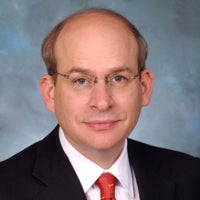
David Leebron David Leebron became Rice University’s seventh president in 2004 and served for 18 years until 2022. Under Leebron’s guidance, the institution underwent a period of growth and transformation. Over the past eighteen years, the university has increased its undergraduate and graduate student populations, enhanced the campus with over $1.8 billion in new construction and capital improvements (some currently underway), extended its research endeavors and international presence, deepened its relationship with its home city of Houston, and earned greater visibility locally, nationally and internationally.
Early in his presidency, Leebron engaged in extensive consultations that produced the Vision for the Second Century (V2C), a plan for Rice’s growth and advancement as one of the world’s premier research universities. One of the biggest changes has occurred in undergraduate enrollment, which will be enlarged from about 2,900 in 2004 to 4,800 students by the fall of 2025. With an increase in graduate programs as well, the student body will have grown by over 80% over the last two decades, to more than 9,000. The Rice Investment financial aid program, launched in 2018 to national recognition, offers free and greatly reduced tuition to students from low- and middle-income families. Undergraduate students from underrepresented groups grew by almost 75% and international students increased sixfold during Leebron's tenure. The number of applicants has increased fourfold, and undergraduate and graduate students now come from every state and 89 countries.
International experience was an important part of Leebron’s mission to provide students with a holistic education. Much like Rice’s first president, Edgar Odell Lovett, Leebron brought a powerful international vision to the post and has actively reached out to Asia and Latin America. Study abroad programs in Argentina and India were added, along with study and research opportunities in Latin America, China, India and Turkey. Under his leadership, Rice also opened its first international campus in Paris, France. Leebron welcomed hundreds of global political and academic leaders, including the Dalai Lama, former President Bill Clinton, former Indian President Abdul Kalam, and Houston Mayor and Rice alumna Annise Parker.
Despite the challenges of the global pandemic, the university significantly increased external research funding and began a number of major new initiatives. These include major investments in materials science and the Carbon Hub, which was created in partnership with Shell and will direct basic science and engineering on multiple technologies with the focus on reducing carbon emissions. In the last eighteen years many other new institutes and research centers were launched, including Rice 360 for Global Health, the Chao Center for Asian Studies, the Center for African and African American Studies, the Center for the Study of Women, Gender, and Sexuality, the Baker Institute Center for the United States and Mexico, and the Liu Idea Lab for Information & Entrepreneurship.
At the same time, Leebron strengthened the university’s local presence with multiple programs and centers that connect students and faculty with Houston residents and the Greater Houston community. In 2010, the Kinder Institute for Urban Research was launched at Rice. Home to the Kinder Houston Area Survey, the longest-running in-depth survey of any urban area in the U.S., the institute will build on that to study the phenomenon of urbanization in cities around the world to improve understanding of the modern global city. In partnership with the City of Houston, Rice began developing a new Midtown innovation district designed to bring together the area’s entrepreneurial, corporate and academic communities. The Ion, a mixed use space in the former Sears building, will serve as an innovation and incubation facility. Student opportunity and engagement in the city were fostered by the creation of the Passport to Houston and what is now the Center for Civic Leadership.
Under Leebron’s leadership, the campus added many new buildings and began construction of others. Academic enhancements include the 10-story BioScience Research Collaborative neighboring the Texas Medical Center; Brockman Hall for Physics; the O'Connor Building for Engineering; Kraft Hall for Social Sciences; Cannady Hall for Architecture; and Anderson-Clarke Hall for Continuing Studies. Leebron also focused on the arts, and new facilities included the Moody Center for the Arts; Brockman Hall for opera; and fundraising and planning for the Sarofim Hall for visual arts. Athletics and student wellbeing were enhanced by Tudor Field House, the Gibbs Wellness and Recreation Center, Patterson Sports Performance Center and the George R. Brown Tennis Center. Other student facilities and campus community enhancements included two new residential colleges (Duncan and McMurtry), a completely new Sid Rich College and new wings of other existing colleges as well as ; the centrally located Brochstein Pavillion, a planned new student center and an explosion of campus art, including James Turrell’s Twilight Epiphany Skyspace.
Prior to taking the helm at Rice, Leebron was dean of Columbia Law School. A native of Philadelphia, he is a graduate of Harvard College and Harvard Law School, where he was elected president of the Law Review in his second year. After graduating in 1979, he served as a law clerk for Judge Shirley Hufstedler on the 9th Circuit Court of Appeals in Los Angeles. He began teaching at the UCLA School of Law in 1980 and at the NYU School of Law in 1983. In 1989, Leebron joined the faculty of Columbia Law School, and in 1996 he was appointed dean and the Lucy G. Moses Professor of Law. Leebron also served as a visiting fellow at the Max Planck Institute for Comparative and International Private Law in Hamburg, Germany, and as the Jean Monnet Visiting Professor of Law at Bielefeld University.
In 2006, Leebron was presented with France’s Commandeur de l’Ordre national du Mérite, and in 2008, he received an honorary doctorate from Nankai University and was awarded the Encomienda de la Orden de Isabel la Catolica by the government of Spain. In 2010, Leebron and his wife, University Representative Y. Ping Sun, were selected by the Greater Houston Partnership as the city’s International Executives of the Year for helping make Houston a center of international business, and in 2022, Leebron
received Houston Business Journal’s Lifetime Achievement Award for Diversity in Business.Leebron, now University Professor and President Emeritus, will spend a sabbatical year as the Beinecke Visiting Professor and Distinguished Leader in Residence at Columbia Law School. He will also serve as the William Nelson Cromwell Visiting Professor of Law at Harvard University. After the one-year sabbatical term he will return to Rice as a member of the political science department. Sun will join him on sabbatical, and will also remain active with a number of nonprofit organizations in Houston and serve as counsel to the law firm of Yetter & Coleman LLP.
Leebron and Sun have two children, Daniel and Merissa.
- Malcolm Gillis (1993-2004)
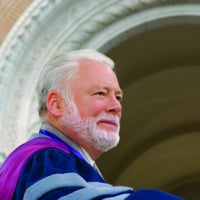
Malcolm Gillis Malcolm Gillis was born in 1940 and spent his youth in rural Florida. While in junior high school in 1952 he entered the labor force and was employed for the next seven years by farm supply and building materials stores. He worked his way through high school and then college at the University of Florida, where he met Elizabeth, his spouse of fifty years. In 1962 and 1963, respectively, he received a B.A. and an M.A. from Florida. In 1968, he received his Ph.D. in economics from the University of Illinois, Urbana.
His first academic appointment was at Duke University in 1968. In 1970 he moved to Harvard, where he alternated teaching and research with economic advisory work in Indonesia, Colombia, Ecuador, Ghana, Canada and Alaska. He returned to Duke in 1984 as a professor of public policy and economics, later occupying the Z. Smith Reynolds Chair in Public Policy. In 1986 he was named Vice Provost and Dean of the Graduate School at Duke, and in 1990, he became dean of the Faculty of Arts and Sciences.
He was named Rice's sixth president in 1993, serving until 2004. Beginning with his inaugural address in 1993, he consistently stressed several principal goals for turn-of-century Rice. These included internationalization in teaching and research, collaboration across academic institutions and disciplines, the need for substantial growth both in faculty size and academic facilities and enhancement both of undergraduate teaching and graduate research.
In 1994, Rice launched the world’s first comprehensive program in nanoscale science and technology, while broadening its focus well beyond the hedges, with nearly 70 new programs in local outreach over the next decade.
New initiatives undertaken during his tenure required significant infusions of new resources. To this end, his administration developed the University’s first strategic plan, which provided a template for Rice’s first ever comprehensive fundraising campaign, with a goal of half a billion dollars. The campaign came to a successful conclusion in 2004, raising $503 million in new resources, allowing among other improvements, a 35% increase both in faculty size and academic space.
While president, Gillis continued to publish in his scholarly specialties of fiscal economics, economic development and environmental policy. A former co-editor of the Quarterly Journal of Economics, the oldest economics journal in the U.S., he published more than 75 articles in scholarly journals and books. Individually and jointly, he wrote or edited eight books, including the widely cited 1988 co-authored publication “Public Policy and the Misuse of Forest Resources.” He also co-authored the leading textbook in the field, “Economics of Development,” now available in five languages. His facility in learning languages, especially Spanish and Indonesian, greatly strengthened his research and service in over 25 nations on all continents except Antarctica. While president, he founded and led several new academic entities. These included the Shell Center for Sustainable Development, the TEXAS/UK Research Collaborative for Nanotechnology and Biotechnology and the Boniuk Center for the Study of Religious Tolerance.
During and after his presidency, he served on numerous public service boards, including the Federal Reserve Bank of Dallas (1998–2004), the Greater Houston Partnership, BioHouston and many others. During this period, he also received the Rice Alumni Association’s Gold Medal, the NASA Distinguished Service Medal, the Center for the Healing of Racism leadership award, the Person of Vision Award, and the Distinguished Award from the Institute of International Education. He was a founding member of the board of the International University Bremen in Germany, a very successful institution modeled after Rice.
In 2005, Gillis resumed teaching in economics and in universitywide courses as University Professor, the highest faculty designation in the university.
In 2004, board chair, Bill Barnett, offered a succinct sketch of Rice during Gillis’ period as President: “in addition to the strategic building program, Malcolm guided an unprecedented period of collaboration with other institutions; a deeper and more fruitful involvement in the community; an enormous enhancement of Rice’s international presence through such things as the Baker Institute for Public Policy, study abroad and International University Bremen; a successful effort to maintain diversity under difficult circumstances; a very substantial expansion of the faculty; a foresighted investment in nano, bio, info and enviro science and technology; the biggest expansion of humanities facilities ever; the first addition to the college system in 30 years; the rise of the Jesse Jones Graduate School of Management; and on and on.”
Professor Gillis died in October 2015. He is survived by his wife, Elizabeth, three children and several grandchildren, including a 2009 Rice graduate.
- George Rupp (1985-1993)
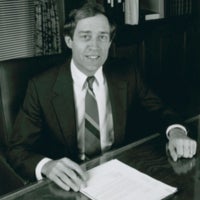
George Rupp On Oct. 25, 1985, George Rupp was officially inaugurated as the fifth president of Rice University, after having taken office as president July 1, 1985. Rupp began his education in the public schools of New Jersey, worked a paper route with his brothers, and worked through high school as a grocery store checker and stocker. He then became a carpenter, built houses, saved money, and went on to study English and German literature at the University of Munich in Germany and at Princeton University, where was a Phi Beta Kappa member and was awarded a B.A. with high honors in 1964. He then pursued graduate study in theology at Yale Divinity School, receiving a Bachelor of Divinity, magna cum laude, in 1976 and then a Ph.D. in 1971 from Harvard University. During his schooling, Rupp received a number awards and scholarships, including a Danforth Graduate Fellowship, a Dwight Fellowship, the Tew Prize, the Mersick Prize, and the Daggett Prize.
After receiving his doctorate, Rupp served as a faculty fellow at Johnston College, part of the University of Redlands, in Redlands, California. He was appointed vice chancellor in 1973 and assumed responsibilities as the school’s chief academic officer. Soon thereafter, in 1974, he returned to Harvard’s Divinity School, teaching theology and taking a leave of absence in 1976 to conduct research at the University of Tubingen in Germany.
In 1977, Rupp was appointed professor of humanistic studies and dean for academic affairs at the University of Wisconsin, Green Bay, and was responsible for all of the school’s instructional, research, and outreach programs. Rupp then served as dean of Harvard University’s Divinity School from 1979–1985.
In signing on as Rice University’s president in 1985, at the age of 43, he became the second youngest Rice president (Lovett was 36 at the time of his appointment in 1908). As a theologian, he was the first non-scientist president. He served Rice for eight years. During that time, two major buildings opened, one for music and one for biosciences and bioengineering (1991). Six interdisciplinary research centers were established, including the James A. Baker III Institute for Public Policy. He also led a revision of the core curriculum to require students to explore fields outside their majors. Research grants doubled, the quality of graduate students improved, and the number of undergraduate applicants tripled.
During his tenure at Rice, Rupp was quoted as saying, “Ideas may be important, certainly individuals are important, but institutions shape both individuals and ideas in a very profound way. It’s a mistake to underestimate the extent to which institutional patterns make a real difference in people’s lives.”
Additionally, he said, “I have a sense that the thousands of bit decisions that someone like the president of a university makes every day do have a cumulative effect, and it’s worth making them seriously and carefully because over the long haul, it makes a difference whether they are made responsibly or indifferently or casually.”
Rupp was known for his strong administrative style and for significantly raising the national profile of the university. A disagreement with the trustees over fundraising tactics (trustees’ reticence to aggressively develop new resources, depending instead on generosity of past donors) led him to announce in fall 1992 that he would step down, which he did in June 1993, becoming president of Columbia University that fall.
- Norman Hackerman (1970-1985)
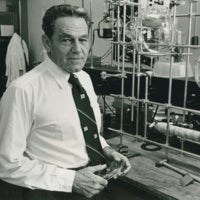
Norman Hackerman Norman Hackerman served as Rice University’s fourth president from 1970 to 1985, after serving 25 years at the University of Texas.Preceeding Hackerman was acting president Frank Vandiver (1969–1970), who succeeded Kenneth Sanborn Pitzer.
During his tenure at Rice, the university launched the Jesse H. Jones Graduate School of Administration and the Shepherd School of Music, as well as establishing separate engineering and social sciences schools, and new biochemistry, linguistics and computer science departments. The endowment was significantly increased by his fundraising efforts, and the residential college system went co-ed under his approval.
Controversy touched his presidency in the early 1980s, when Rice hired Watson Brown as head football coach at a high salary, bringing many complaints from academic-oriented students and faculty. Hackerman reportedly considered the criticism a “commentary on society, not on [himself].”
Hackerman, a chemist, was born in Baltimore, Maryland, in 1912, and graduated with bachelor’s (1932) and doctoral (1935) degrees from Johns Hopkins University. He joined the University of Texas faculty as an assistant professor in 1945, and worked his way up through the academic ladder to become president in 1967. In 2002, Rice’s Board of Trustees established the Norman Hackerman Fellowship in Chemistry in honor of Hackerman’s 90th birthday. Hackerman died in 2007 at age 95.
- Kenneth Pitzer (1961-1968)
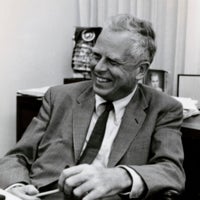
Kenneth Pitzer Kenneth Pitzer was named Rice’s third president in 1961, after serving as dean of the College of Chemistry at the University of California, Berkeley. He became known for his vision which not only maintained Rice’s rigorous undergraduate education but also made it a research university of national standing.
Some of Pitzer’s accomplishments include bringing in federal funding for research projects, creating the nation’s first space science program, doubling the size of Fondren Library, opening the university to students of all races, starting the Continuing Studies Program, creating a bio-chemistry department, expanding the social sciences school and more than doubling the number of graduate students and faculty.
Pitzer left Rice in 1968 to become president of Stanford University. He later returned to teaching and research in chemistry at Berkeley, where he retired. He won numerous awards for his contributions to the field of theoretical and physical chemistry, including the Welch Prize in Chemistry, the American Chemical Society’s Award in Pure Chemistry and a membership in the National Academy of Sciences. He died in 1998 at age 83. A fellowship in his name, the Kenneth S. Pitzer/Schlumberger Endowed Chair was established in 2003, with Rice chemist Robert Curl being the first to hold the chair.
- William Houston (1946-1960)
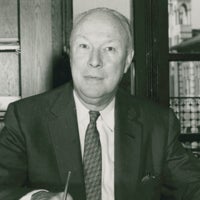
William Houston William Houston (pronounced How-ston) was born in Mount Giliad, Ohio, Jan. 19, 1900. He received B.A. and B.S. degrees from Ohio State University in 1920. In 1922, he received an M.S. degree from the University of Chicago, and in 1925, his Ph.D. from Ohio State University.
Houston was a National Research Fellow at the California Institute of Technology and taught there until he became president in 1946 of what was then Rice Institute. Houston studied in Germany on a Guggenheim Fellowship in 1927, assisting Warner Heisenberg and others in the development of quantum theory.
The U.S. Navy awarded Houston its Medal of Merit for directing development of the first homing torpedo and for supervising scientific studies which helped improve U.S. weapon effectiveness in the area of undersea warfare. Because of his genuine modesty, Houston never wore his Medal of Merit ribbon.
Houston made pioneering efforts in the fields of atomic spectroscopy and solid-state theory. He was the author of two books: “Principles of Mathematical Physics” (1934) and “Principles of Quantum Mechanics” (1951), as well as of numerous scientific articles. After having been a fellow of the American Physical Society for many years, he was elected its president in 1962. He also served on the Society Council.
Houston was a member of the National Academy of Sciences, serving on its council and on several important committees. He was also a member of the American Philosophical Society and several other scientific and educational associations. He served on the National Science Board and as a trustee of the Carnegie Foundation for the Advancement of Teaching. He retired from Rice in 1960, due to ill health.
When Houston arrived at Rice, he greatly expanded graduate study and research. He also initiated a five-year engineering program with greater emphasis on the humanities than had previously existed, and implemented the planned residential college system.
Houston died after a brief illness, in Edinburgh, Scotland, Aug. 22, 1968, while attending the 111th International Conference on Low-tempurature Physics at St. Andrew’s University.
- Edgar Odell Lovett (1907-1946)
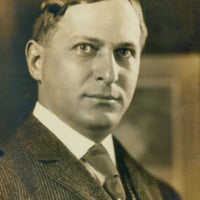
Edgar Odell Lovett Edgar Odell Lovett (1871–1957), mathematics professor and president of Rice Institute was born in Shreve, Ohio, April 14, 1871. After graduating from Shreve High School, he entered Bethany College in Bethany, West Virginia, where he graduated in 1890. From 1890 until 1892, he was professor of mathematics at West Kentucky College; in 1892 he became an instructor at the University of Virginia, where he continued his studies and received an M.A. and Ph.D. in 1895. The following year, he studied in Europe, receiving M.A. and Ph.D. degrees from the University of Leipzig in 1896. In 1897, Lovett lectured at Johns Hopkins University and the universities of Virginia and the University of Chicago, and became an instructor in mathematics at Princeton University. He was promoted to assistant professor of mathematics in 1898 and from 1900 to 1905 held the rank of professor. From 1905 to 1908 he was both professor and head of the Department of Mathematics and Astronomy at Princeton.
In 1907, Lovett was was asked to head Rice Institute; he was recommended for the post by Woodrow Wilson, then president of Princeton. He accepted in 1908, moved to Houston, and was formally inaugurated as the first president of the institute on October 12, 1912; he continued in this capacity until his retirement on March 1, 1946. Thereafter, he was associated with Rice as president emeritus, director, and consultant.
Lovett was a member of many learned societies, including Phi Beta Kappa, the London Mathematical Society, the American Association for the Advancement of Science and the Royal Astronomical Society. In 1898 he married Mary Ellen Hale; they had two daughters and two sons. He died Aug. 13, 1957, and was buried in Houston’s Glenwood Cemetery.
Office of President
Campus Location
Allen Center, Suite 440
6100 Main Street
Houston, TX 77005
Mailing Address
Office of the President–MS 1
Rice University
P.O. Box 1892
Houston, TX 77251-1892
Contact Information
713-348-4500
president@rice.edu
